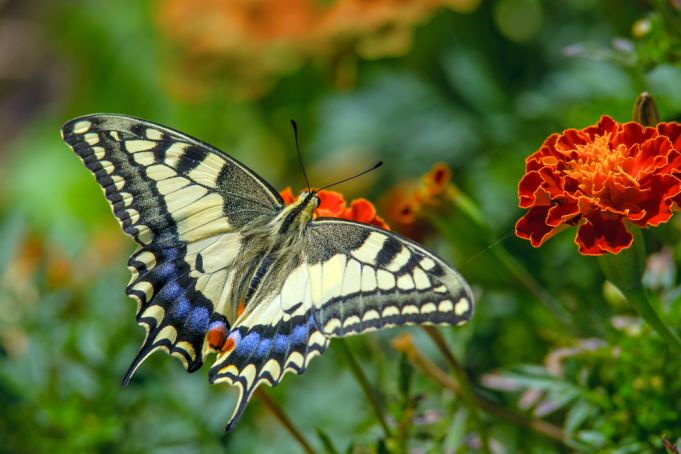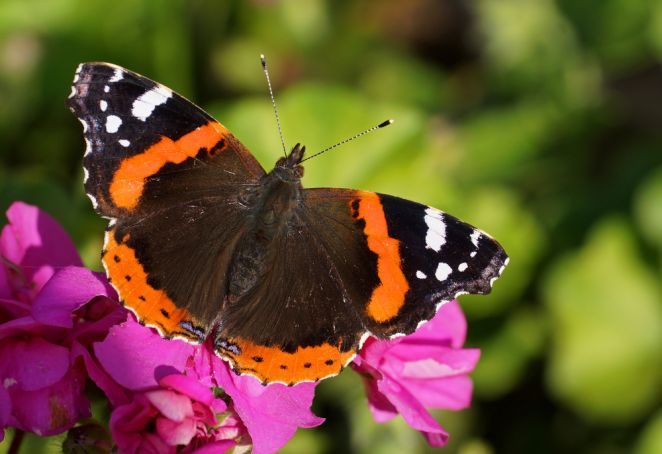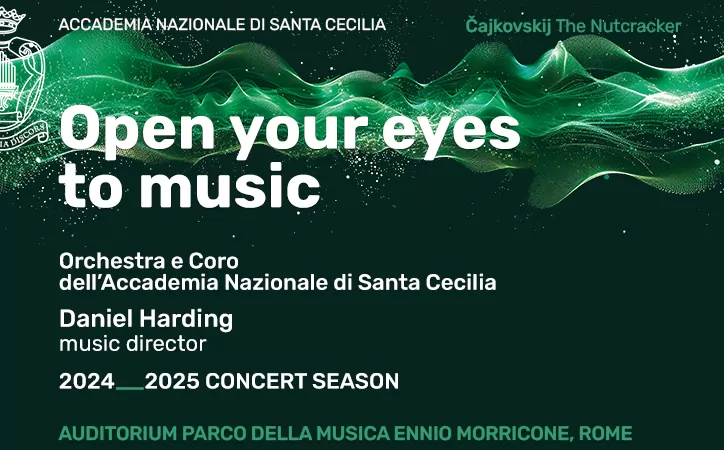Guide to the butterflies of Rome
A handy guide to identifying Roman butterflies.
Butterflies are insects and, as with other insects, they have six legs and wings. Their wings are coated with tiny scales which will come off on one’s fingertips if handled. In fact, butterflies belong to the insect order Lepidoptera from the Greek meaning scaly wings.
Butterflies all over the world have been in decline for some time now; 20 years ago one could record more than 20 different species a year on one’s balcony in Rome, now only five or six. This diminishing is due partly to the worldwide use of insecticides in agriculture, with many other insect populations also shrinking for the same reason.
Rome, with its many parks and trees (which are not treated with insecticides in the same way as weeds and wildflowers are) can still boast of about 60 different species out of Italy’s 300 or so and they are beautiful to behold.
With their bright colours and elegant flying, these insects brighten the streets and parks of Rome in the spring and summer months, or even in late autumn and early spring when those butterflies which hibernate are still taking the sun or hoping for some sunshine.
If one wants to watch butterflies the best place to do it is where there are many flowers. Most flowers produce nectar, a sweet liquid containing glucose, which is a simple sugar full of energy. Butterflies, since they do an enormous amount of flying, are in particular need of energy sources and nectar is exactly that.
To find public parks where suitable flowers will be in bloom there is a book available: Guida al Verde di Roma which is produced by the Comune di Roma. It lists and describes over 50 public gardens in Rome, many of which are rich in flowerbeds where butterflies abound. Just try walking through Villa Torlonia on a sunny day in spring or summer. It is amazing to see such richness of butterfly species and is ideal for photography. The photographs can be studied at home and, with a good book the insects can usually easily be identified.

Photographing butterflies needs quite a lot of practise, experience and a decent zoom lens. When the insect to be photographed has been sighted, approach your subject slowly, avoiding casting a shadow which would certainly result in the butterfly flying away. Then attempt to compose the photo on the screen or viewfinder before making the exposure. At first the beginner will be rather disappointed but with experience results will improve.
Geranium Bronze
These butterflies, cacireus marshalli, have a story to tell. They are natives of South Africa where their larvae (caterpillars) feed on wild plants of the geranium family. They were first recorded on the Spanish island of Mallorca in 1990 where the importation of geranium plants from South Africa brought caterpillars of these butterflies with them. The butterflies rapidly spread to other islands, to mainland Spain and then France and most of southern Europe. They are still on the agricultural pests list in spite of their delicate beauty.
Swallowtails
Two Swallowtail species are on the list of agriculatural pests and are very common in most of Europe. The Swallowtail, Papilio machaon, is widespread in Europe. The Scarce Swallowtail, iphiclides podalirius, is also common all over Europe except for the British Isles where it rarely arrives, hence the name. This one qualifies as a pest since its caterpillars feed on the leaves of fruit trees.
Peacock and Red Admiral
These two butterflies are common in Rome and they have stinging nettles in common since their caterpillars feed on the leaves of that plant. Nettles grown prolifically on any piece of wasteland, including pavements at the junction with walls. Sadly the comune of Rome removes these plants simply by hacking them down in many areas of the city which explains a little why the butterflies are not as common as they once were.
Small Tortoiseshell and Large Tortoiseshell
Named after their particular colouring, these two, although in the same family (Nymphalidae), are not particularly close to each other as their food plants show. The smaller one, with white tips to its forewings, lays its eggs on stinging nettles whereas the larger one uses various trees as its food plant, a term which refers to the caterpillars' food, where eggs are deposited. The adults feed on nectar and other nourishing liquids such as fruit juices.

Brimstone
These yellow butterflies, which carry the old name for the element sulphur, are believed to be responsible for the name “butterfly”. One problem for the photographer is that, unlike nearly all others, when at rest they always hold their wings vertically above them. Most butterflies vary from verticle to horizontal wings when at rest. The two species, Brimstone and Cleopatra, are very similar with the same food plant of the Rhamnus (blackthorn) family. The most obvious difference between the two is the patch of orange colour on the forewings of the male cleopatra. The females are much paler with a little orange marking on the underwings where they meet the thorax.
Fritillaries
There are about 55 species of fritillaries in Europe, nine or ten of which frequent Italy with only a few reaching Rome. The name fritillary originates from the French name for a dice box and the butterfly is speckled in a similar pattern. The common one in Rome is the Queen of Spain fritillary with its underside beautifully blotched with silver spangles.
Blues (Lycaenidae)
This is the family of “Blue” butterflies of which there are over 100 species in Europe and Italy, and Rome has its fair share so one is pretty sure of seeing them. They are mostly rather small and quite a few are coloured in shades of brown rather than blue or partly so. Straight forward identification is difficult and upper side, undersides, number, colour and arrangement of markings, mostly spots, need to be examined carefully. A typical example is the tailed blues which are fairly common in summer since they are migrants from the south and often need to feed and require nectar-bearing flowers.
The Long Tailed Blue and Lang’s Short Tailed Blue are very similar but just look at their undersides and the difference is clear. The Long Tailed Blue has a broad white stripe from bottom to top of the wings whereas Lang’s has a totally different arrangement of brown and white stripes.
Butterfly or moth? Both are lepidopterra but they have some easily noticeable differences. The antennae of butterflies are swollen or knobbed at the ends. Those of moths are either straight or with no knob. When at rest moths fold their wings close to the body with the forewings covering the hind wings. Butterflies fly in the day time (sun-worshippers) whereas moths are mostly night flyers. There are however exceptions in both cases and daytime moths tend to be brightly coulored unlike the “normal” night flyers.
By Gerry Firth
Collins Field Guide to Butterflies of Britain and Europe excellent and more than enough for someone beginning to search for and identify these insects. Many other guides confine their texts to particular parts of Europe only.
















